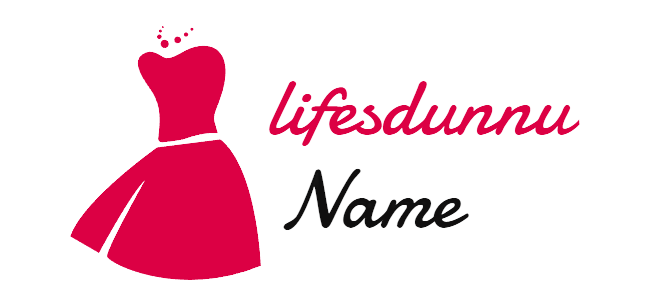For centuries, performers of theatre and performance arts have used makeup as a tool to bring characters and stories to life. Makeup has become an integral part of the process of creating characters and emotions, allowing performers to push boundaries of truth and reality on the stage. While some may think of makeup as a frivolous part of the theater process, in truth it is a powerful tool that can both express and suppress feelings and emotions. In this article, we will be exploring the tremendous role makeup plays in theatre and performance arts.
1. The Transformative Power of Makeup
Makeup can be an incredibly powerful form of self-expression and transformation. It has the potential to be expressive, empowering, creative, and downright awe-inspiring. When done right, it can be both complexly beautiful and incredibly playful.
When it comes to expressing creative vision and artistry, makeup is like the ultimate medium. It provides women with the unique opportunity to showcase a completely new version of themselves, from creating a completely different look to falling in love with the current one.
- It can be incredibly empowering: Applying a well-done makeup look can be an excellent confidence booster, resulting in increased self-esteem when rocked in public. Whether you’re going about your day or hitting the town, the feeling of accomplishment that comes with a pristine makeup application can be both exhilarating and empowering.
- It’s a form of personal expression: With makeup comes a high level of creative control. Whether through bold, vibrant colors, intricate blending techniques, or delicate shading, makeup can be a way to express yourself and show the world how you feel.
For some, applying makeup can be a meditative practice, a hobby that allows them to get lost in the complexities of creating a finished look. For others, it is about transforming their face into a work of art every morning. However you use it, makeup has the potential to be truly transformative.
2. A Tool for Characterization
Writing characters can be challenging for many authors. It’s not as easy as creating a character on-the-go – it requires careful thought and planning. When it comes to characterization, a valuable tool authors can use is a character profile.
A character profile serves as an in-depth guide to your character’s personality. It helps the author understand the character’s traits, feelings and motivations better. This ensures that the character’s decisions, dialogues and behaviour are internally consistent, convincing and well written.
Here are some of the aspects of a character profile:
- Appearance: Hair, eye color, body type, clothing etc.
- Behaviour: their posture, expressions, habits, mannerisms and attitude towards life.
- Background: upbringing, educational qualifications, family relationships, past etc.
- Goals: present and future ambitions and desires.
- Personality: values, emotions, strengths, weaknesses, fears etc.
Creating a character profile is an essential precursor to writing meaningful and relatable characters that readers can connect with. However, authors should feel free to be imaginative and add things to their character profile that are important to the character’s story.
3. Makeup for Mood and Atmosphere
When it comes to makeup, it’s not just about looking your best but also about expressing yourself and bringing out your personality. The best way to do this is to choose the right colors and products that work together to create the right atmosphere and mood. Whether you’re creating a dark and mysterious vibe, soft and subtle tones, or a fun and vibrant look, there is something for everyone. Here are some tips for creating the perfect atmosphere and mood with makeup.
- Experiment with Color – Take your look to the next level by using unexpected hues and hues. Try contrasting colors for a unique, daring effect or simply combine complementary shades for a softer and subtler look.
- Add Dimension – Bold colors have the ability to create a statement, but they can also overpower a look. To keep it grounded and subtle, add a soft iridescent or metallic shade. It will enhance your look while still not taking focus away from the main hues.
- Highlight Your Features – Playing up your best features can have a big impact on the overall look. Deeply pigmented lipsticks or creamy highlighters can help complement your features and create an air of femininity.
Take the time to experiment and find the look that vibes with your style and character. Whether you’re just playing around or preparing for a special occasion, makeup can be your best friend when it comes to creating the perfect atmosphere and mood.
4. Taking a Closer Look at Theatre Makeup Techniques
Whether you are getting ready for the stage or simply learning about the industry, can be very beneficial. Here are some tips and considerations when it comes to makeup for the theatre.
Take Time for Preparation
It’s always important to give yourself plenty of time for makeup. Rushing will only lead to a less than desired result. Give yourself plenty of time to practice and get comfortable with the techniques used.
Understand Call Lights
Be sure to pay attention to call lights. Lights will be used to indicate when makeup changes need to occur, so it’s important to be prepared and alert when they’re used.
Focus on Matching Colors
Color matching when it comes to foundation and concealer is key. Make sure to find the right shades to match your natural color, as this is essential to achieving a professional look.
- Invest in high quality makeup
- Use moisturizer before applying makeup
- Apply blush to the cheeks
- Consider different colors and looks to create a more unique style
By taking the time to understand and properly apply theatre makeup, you can easily achieve the desired look. The techniques may take some time to perfect, but with some practice and dedication, you won’t regret the results!
5. Makeup: Enhancing the Performance Arts Experience
As a performer, appearance plays a crucial role in standing out from the rest of the crowd. Whether one is participating in a play, delivering a speech, or even hosting a video, it is important to look perfect, as one’s look is often the first thing an audience takes notice of. The appropriate application of makeup can make the difference between capturing people’s attention and letting them look elsewhere.
Makeup can do wonders when it comes to performance arts. It can not only help with highlighting the facial features of the actor, but it can also play a part in its own story telling. Strategic application of makeup can be used to represent a character’s emotional state. Different makeup shades, styles and hues can be used for highlighting the range of different emotions one might feel during a performance.
In addition to representing emotion through makeup, it can also be used to show one’s age and social status. Makeup can add depth and texture to a character; whether they are an old man, a young woman, a king, rich or poor, makeup can be used to bring out all the necessary nuances.
From television to off-Broadway shows, makeup truly is an essential part of the performance arts world and can make a great impact if used appropriately. For starters, product selection is extremely important. Makeup should be chosen based on its suitability for a particular performance and should be applied in a way that enhances the actor’s presence. A few basic tips to follow include:
- Know your look – decide what look you are aiming for and how this matches with the scene
- Pick the right products – use products that are long-wearing and camera friendly
- less is more – try to use natural products and avoid overly heavy makeup
- Adapt to new looks – be prepared to change your look depending on the occasion
Makeup can surely enhance the performance arts experience and give the audience something worth watching. Being “makeup ready” is an essential part of preparing for a performance, and can certainly make a huge impact when done right!
Makeup is an essential element to many theatre and performance art pieces, capable of both communicating a character’s story as well as connecting with audiences. As small as its contribution may appear to be, the impact that makeup has on stage is tremendous, and continues to astound us all. Long may its influence on theatre and performance art endure!


